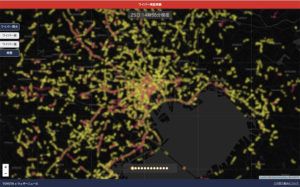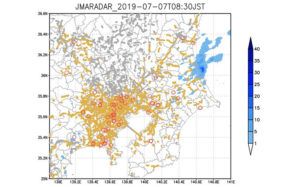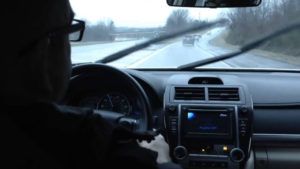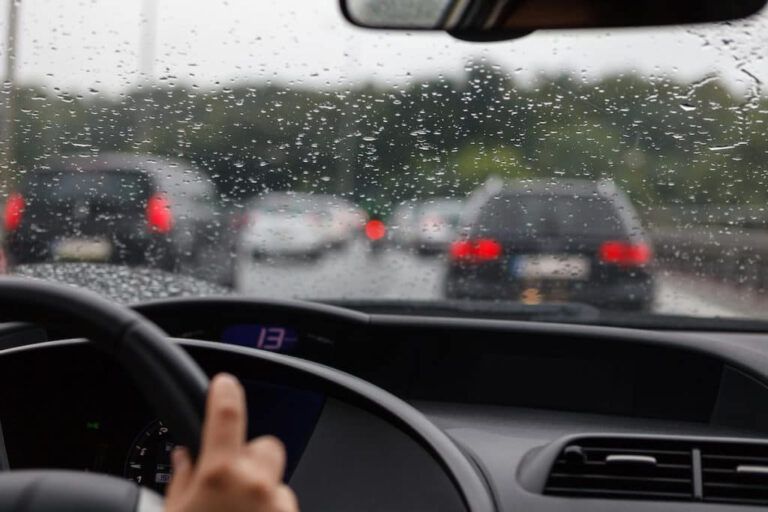Japanese meteorology company Weathernews and Toyota have started verification testing in Tokyo, Osaka, and Aichi in which the conditions of roads and their surroundings are ascertained using the operating status of windshield wipers, as well as weather data.
The on-road trials are part of a joint research effort to increase the accuracy of weather observation and forecasts, and improve driver safety using Weathernews’ weather data and the data obtained from Toyota’s connected vehicles. Studies show that the rate of accidents during rainy weather is four times that of sunny days, so the presence of precipitation has a large effect on the safe driving of vehicles. However, raincloud radar, which is often used to detect and predict rainy areas, has the disadvantage of being unable to detect rain resulting from rainclouds in the lower layer of the troposphere, an altitude of 6,560 feet (2,000m) or below, or small raindrops such as those that form during drizzle. In such cases, it has been difficult to accurately determine areas where it is raining.
In the verification tests, the wiper operating status of Toyota’s connected vehicles being driven in the designated regions is visualized as a map and compared with actual weather data. Because wiper operating status typically corresponds to the presence or absence of rainfall, using wiper data has the potential to allow detection of precipitation that cannot be detected by standard raincloud radar. In the verification tests, the relationship between the wiper data and weather data will be analyzed in detail, with the aim of detecting phenomena that could affect wiper operation in addition to detecting precipitation.
In addition to its own observation network at approximately 13,000 locations nationwide, Weathernews makes use of 180,000 weather reports a day from users to provide highly accurate weather forecasts. Through this joint research project, both companies will provide weather data and the vehicle data obtained from connected vehicles as information ‘that is useful during emergencies’ on a broad basis, with the goal of contributing to improved driver safety. In tests earlier this year where low clouds produced rain that did not show up on radar, rain was instead reported by users of the Weathernews app. The user reports received matched closely with the areas where wipers were being operated, showing that wiper data can detect rain that cannot be detected using radar.
The partners will also perform a detailed analysis of the relationship between the wiper data and weather data, and in addition to accurate detection of rainy areas, they plan to estimate the strength of the precipitation based on the power at which the wipers are being operated, and consider using wiper data for weather forecasting. By using wiper data to accurately ascertain the conditions of roads and their surroundings, such as precipitation and actual precipitation strength, undetectable using radar, they aim to contribute to driver safety by issuing warnings to drivers according to the situation. As part of this initiative, this summer, both companies developed an AI algorithm that predicts flooded locations on roads, and performed a verification test in October of this year.





